
By Andrea Quattrini, Harvey Mudd College
December 4, 2017
An armored searobin (Peristedion sp.) seen during Dive 04 to explore “Long Mounds.” This dive was relatively shallow for the Okeanos, starting at 410 meters and ending at 383 meters, which led to us seeing a higher diversity of fish species than often encountered on deeper dives. Armored searobins use their elongated rostral extensions with attached barbels to hunt for food in the soft sediments. Video courtesy of the NOAA Office of Ocean Exploration and Research, Gulf of Mexico 2017. Download larger version (mp4, 27.9 MB).
The first several dives of the Okeanos Explorer Gulf of Mexico 2017 expedition took place along the West Florida Escarpment at depths ranging from 380 - 2,300 meters (1,250 - 7,545 feet) and in a variety of benthic habitats. Scientists were interested in acquiring information on the distribution and abundance of benthic fauna at these dive sites, as many of the sites have been proposed by the Gulf of Mexico Fishery Management Council as potential Habitat Areas of Particular Concern. Some of the fishes observed during these dives included the following demersal taxa that are commonly observed over soft sediments or in rocky habitats at similar depths in the southeastern U.S. Exclusive Economic Zone.
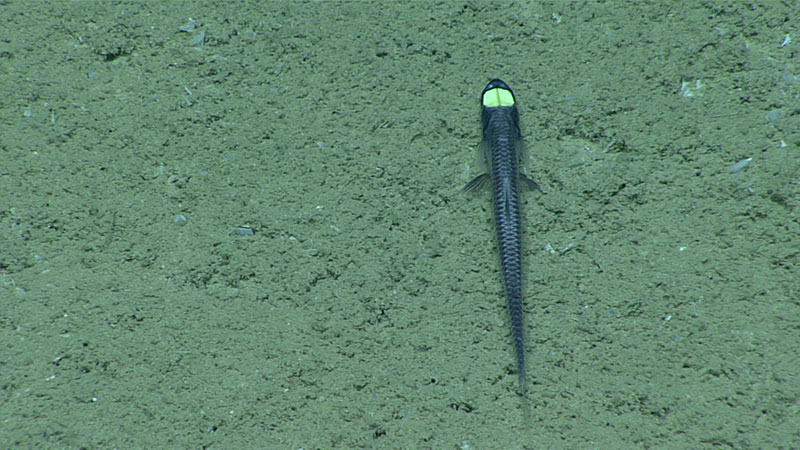
Image courtesy of the NOAA Office of Ocean Exploration and Research, Gulf of Mexico 2017. Download larger version (jpg, 1.2 MB).
Our second dive of the expedition took us relatively deep, to below 2,000 meters (6,560 feet) to explore a canyon feature southwest of Pulley Ridge along the West Florida Escarpment. During the dive, we encountered this common deep-sea fish, Ipnops murrayi. Ipnops is in the family with other tripod fishes (see image below), but lacks the elongated and specialized fin rays. Rather, this is the only genus in the family to have thin, bony membranes covering degenerate eyes.
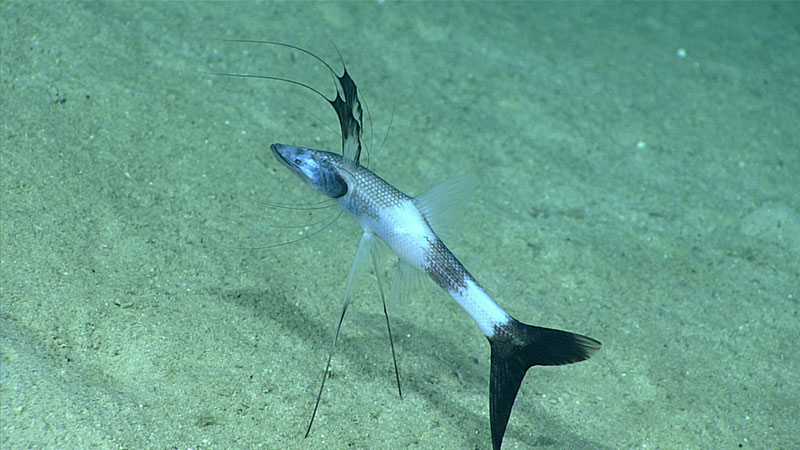
Image courtesy of the NOAA Office of Ocean Exploration and Research, Gulf of Mexico 2017. Download larger version (jpg, 958 KB).
Bathypterois viridensis is one of several tripod fishes seen on the expedition thus far. Bathypterois spp. perch on their elongated fin rays and often face into the current, waiting for food to drift or swim by. These fishes have diminutive eyes; rather they use their modified fin rays as tactile organs to sense prey and predators. This individual was seen during Dive 03, in an area being referred to as “Okeanos Ridge.” All tripod fishes are thought to be synchronous hermaphrodites, meaning they have active male and active female reproductive organs at the same time.
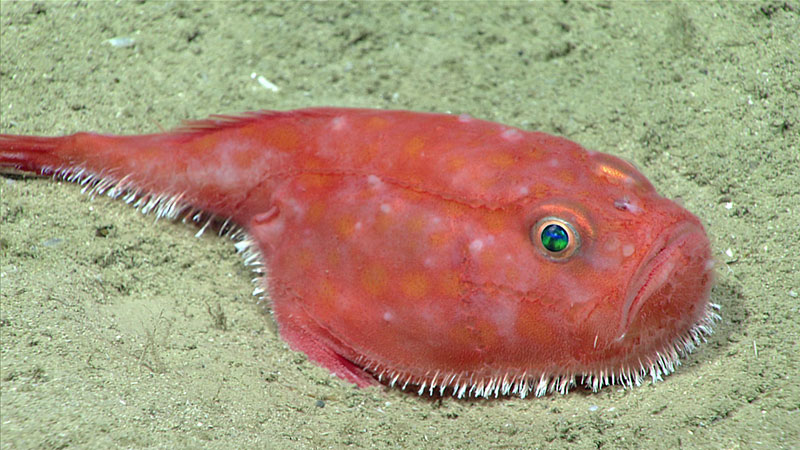
Image courtesy of the NOAA Office of Ocean Exploration and Research, Gulf of Mexico 2017. Download larger version (jpg, 1.0 MB).
This sea toad (Chaunax suttkusi) was seen while exploring “Okeanos Ridge,” on sedimented canyon floor at ~740 meters (2,428 feet) depth. This species has often been observed lying on soft sediments in similar depths not only in the Gulf of Mexico but throughout the North Atlantic. This species is named after Royal D. Suttkus, a prominent ichthyologist that curated and contributed to the fish collection at Tulane University.
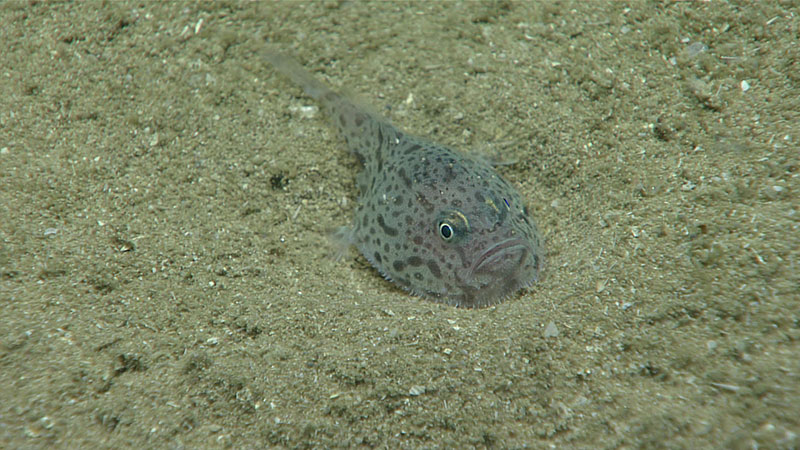
Image courtesy of the NOAA Office of Ocean Exploration and Research, Gulf of Mexico 2017. Download larger version (jpg, 1.1 MB).
Another Chaunax sp. seen during the fourth dive of the expedition. This mottled coloration is unlike other sea toads seen in situ. Perhaps this individual represents a juvenile C. suttkusi; however, further imagery and/or collections are required to corroborate this identification.
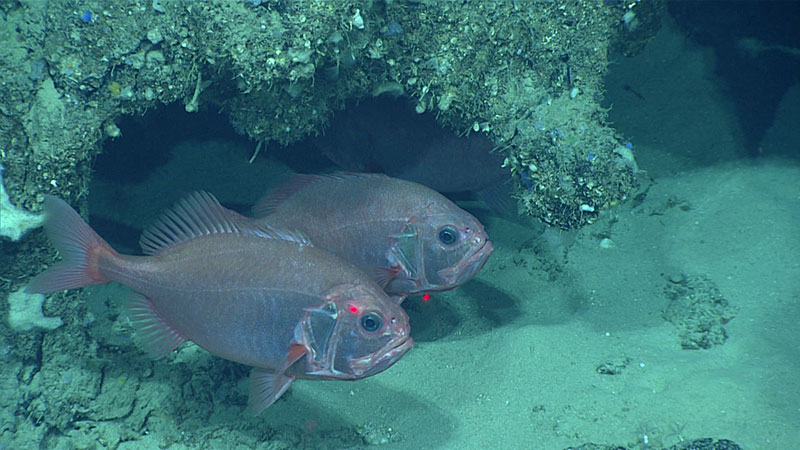
Image courtesy of the NOAA Office of Ocean Exploration and Research, Gulf of Mexico 2017. Download larger version (jpg, 1.0 MB).
A pair of Darwin slimeheads (Gephyroberyx darwini) seen under a ledge during exploration of “Long Mounds” on the West Florida Escarpment. We saw several aggregations of these fishes, which are closely related to the commercially targeted orange roughy. Although not commercially fished for in the Gulf of Mexico, this species has been used for fishmeal and fish oil in the eastern Atlantic (see fishbase.org ).
Thanks to John Caruso for confirming the Chaunax identifications and all of the ichthyologists in the Okeanos chat room for providing their expertise!